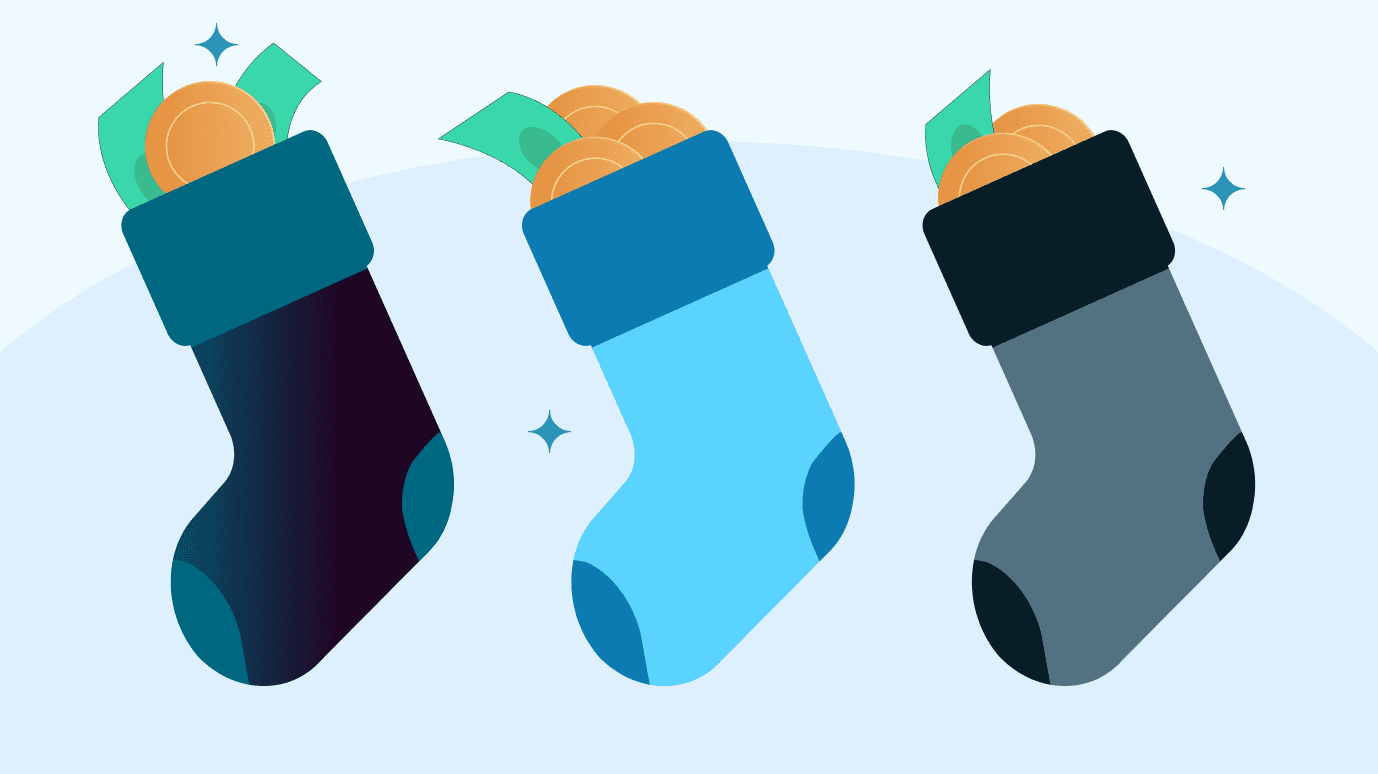Apr 06, 2020
The Stash Way: Diversify with Bonds
There are so many different kinds of bonds; learn what they are and how they can help round out your portfolio

Diversify your bond holdings
At Stash, we believe diversification is a critical part of a good investing strategy.
Diversification is also one of the pillars of the Stash Way, our guide to helping you achieve financial wellness, that includes a long-term, regular investment strategy.
When you diversify your portfolio, you’re buying a broad selection of securities, including both stocks and bonds.
When you diversify your stock holdings, you’re making sure you’re not over-investing in one industry or one sector. And to fully diversify, you could consider investing not just in the U.S., but globally, in both developed and emerging markets.
And just as you can diversify your investments in stocks, you can also create a diverse portfolio of bonds.
Stash’s Portfolio Builder tool can help you create a portfolio with a mix of investments according to your risk preferences.
Special note: Whenever you put money in the stock market, your investments can lose money, and diversification is not a guarantee against market volatility. It’s possible that during a serious market correction, diversification may not protect you. Further, it’s also possible to over-diversify or purchase too many investments, which could wind up costing you extra fees, or leave you with overlapping investments.
What’s a bond?
First, let’s define what a bond is. A bond is a form of debt. It’s essentially an IOU from a company, government, or some other entity. When you buy a bond, you are buying the IOU from that company or government.
Bonds have three key components—a maturity date, a price, and an interest rate. The interest rate, sometimes referred to as the coupon, stays the same, while the price of a bond typically fluctuates. Together the price and the interest rate combine to give you the yield of the bond. While the interest rate of the bond is fixed, the yield can fluctuate, based on market conditions.
Different kinds of bonds
There are lots of different types of bonds, and choosing a variety of bonds can help you diversify your investments.
Treasuries
The U.S. federal government issues bonds called Treasuries and T bills, which help finance the running of the federal government. The federal government has an obligation to repay Treasuries, so they are considered among the safest bonds out there. The maturity for Treasuries can be either from a few days to 10 years, or even 30 years.
Municipal bonds
States or municipalities issue municipal bonds, also called munis, to pay for their own operations, or special projects. Say, for example, a fictitious town called Sunnyville wants to build a new mass transit system or a new dam. It might issue bonds to finance these projects.
Corporate bonds
It’s not just governments that issue bonds, companies do too, and for many of the same reasons. Businesses may want to raise money for research and development or to expand operations. There are different kinds of corporate debt, however. Generally speaking, you can lump corporate bonds into two buckets:
Investment grade: The companies that issue this debt are often larger companies with a long track record of earnings and revenue, so analysts may deem them a higher grade investment that has a higher likelihood of being repaid.
Junk: These bond are not really junk, but they’re often considered higher risk because the businesses that issue them may have less of a history of stable revenue and sales, or they may have some other issue, like high amounts of debt. To compensate investors for the risk, the company will often pay a higher interest rate on the bonds.
Inflation and interest rate bonds
Bonds are sensitive to both interest rates and inflation. It’s a little complicated, but we’ll explain.
When interest rates rise, the coupon, or interest rate, paid by existing bonds stays where it is. That means the interest rate paid by the bond is worth less, and that can cause the price of those bonds to fall, and along with it the yield.
Two different kinds of bonds protect against inflation and interest rate increases.
Treasury Inflation-Protected Securities (TIPS), are slightly different from conventional bonds. They’re bonds that factor in inflation. As their name suggests, they are Treasury bonds issued by the federal government.
But in contrast to bonds that aren’t inflation protected, the yield on TIPS will increase as inflation rises. Essentially, the face value of the bond is adjusted upwards twice a year to account for increases in the Consumer Price Index, or CPI, which the federal government uses to measure price increases on a wide range of consumer goods and services.
Floating interest rate bonds. When interest rates go up, the return on floating rate bonds should also increase. Unlike conventional bonds, the price of the bonds doesn’t fall. In other words, the yield goes up with interest rates.
Short and long-term maturity bonds
Some bonds may mature in a matter of days or months. Others mature in years. Ten-year Treasuries, as their name implies, mature in 10 years. But there’s also something called the 30-year Treasury. The same goes for corporate bonds. They can mature in a matter of days, months, or years.
Short-term bonds tend to have less risk because they are paid back more quickly, and consequently, they have a lower interest rate. Longer maturity bonds have more risk—more can happen to a company or government over years or even months—so to compensate investors, these bond can have a higher interest rate.
Bond funds
Some ETFs and mutual funds also let you buy a basket of bonds in one investment.
Some of these funds even let you buy a basket of bonds that represents the entire bond market, including bonds with short and long maturities, corporate bonds, and Treasuries. The theory is that you can diversify by buying one investment.
Diversification can be an important strategy for investors to apply to their stock market purchases. And diversification applies not only to stocks but to bonds as well.
Stash lets you choose between dozens of stocks and funds, including bonds. You can start investing with any dollar amount today*.
Related articles

investing
Dec 11, 2025
How to Invest through the Holidays—Without the Stress

investing
Oct 23, 2025
Why Millions Are Canceling Disney+ and Hulu and What It Means for Investors

investing
Aug 15, 2025
Money Insights

investing
Jul 07, 2025
How to start investing: a guide for beginners

investing
Jun 04, 2025
Growth Stocks to Invest in for 2025

investing
Jun 03, 2025
Sustainable Investing Stocks to go after in 2025
By using this website you agree to our Terms of Use and Privacy Policy. To begin investing on Stash, you must be approved from an account verification perspective and open a brokerage account.
